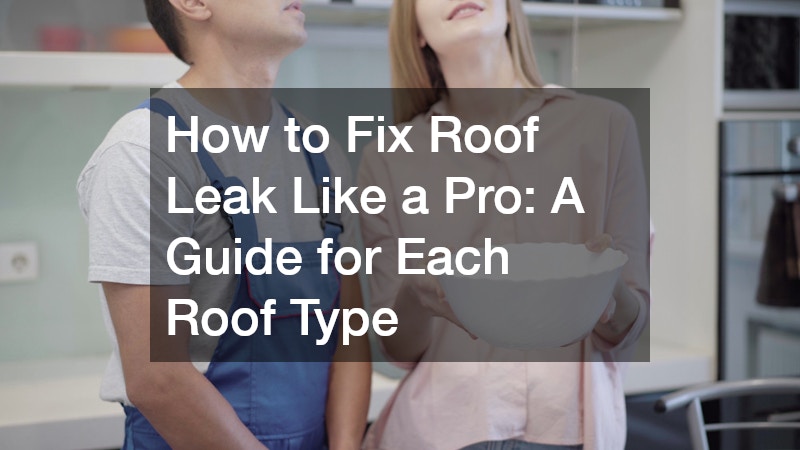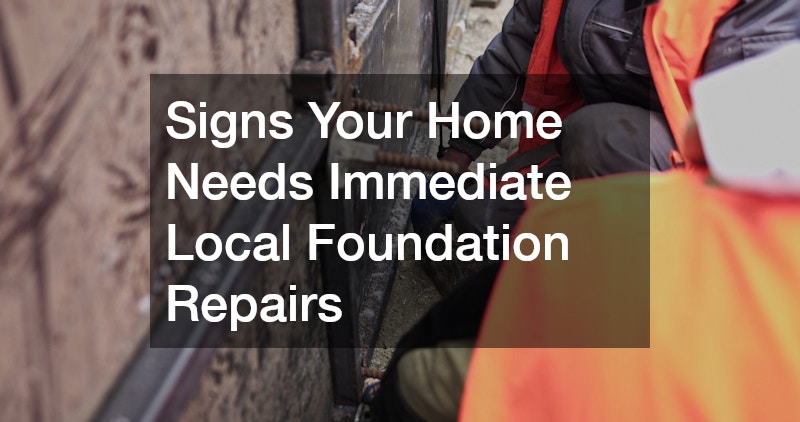If your new roof is leaking, it can be very frustrating and concerning. There can be several reasons why a new roof may experience leaks and fixing it requires finding the real cause. You may be eager to call a reliable roofer to get started with repairs immediately, but it’s better to try and find out what the cause of your leak is. Of course, this can be done by an experienced roofer, but having an idea of what to expect will help you prepare for the costs involved.
In this article, we’ll look at the main possible causes and some steps you can take to address the issue. Once you’re done reading here, you’ll be ready to contact your local residential roof replacement services and get started with repairs.

Poorly Installed Roof
The primary cause of a leaky new roof is often subpar workmanship. Many homeowners are tempted to opt for the most affordable roofer, but it’s important to note that such budget-friendly options often result in compromised installation quality. Cheaper roofers frequently take shortcuts during the installation process, leading to potential leaks down the line. As such, the cheapest roofers aren’t really the most affordable—they lead to extra costs down the road eventually. Also, a contractor lacking experience may rush through the job, which can result in leaks or cracks during the process. You should inspect your roof and determine whether or not the reason for your leak is either a rushed job or corners that were cut.
Fascia or Soffits Issues
The fascia and soffits are integral to the structure of your roof. They play a vital role in keeping your home looking good and providing airflow into your roof. Plus, they accentuate the exterior of your house. However, if there are any holes or cracks in your fascia and soffits, this could eventually lead to water leaking into your home. You’ll have to ask professional roofing services to inspect your roof if that’s the case.
Most roofers will tell you that the installation of soffits can be challenging, and an incorrect installation can give rise to a range of significant issues. Improperly placed soffits can be susceptible to damage from strong winds and adverse weather conditions. Additionally, if the soffits are positioned too closely together, they may fail to provide adequate ventilation for your home.
No Caulking or Sealing
When roofing contractors complete a new roof installation, it is common to assume that any leaks are caused by issues with the shingles. However, it is important to consider that the problem might actually stem from the lack of caulking or sealing around openings such as plumbing jacks and water heater vents on the roof.
If this is the suspected cause of your new roof leakage, it does’t mean that your entire roof is compromised. In such cases, all you need to do is contact your roofer or other professional roofers and request they properly caulk or seal those specific areas. This service should typically be included when replacing a roof, but if necessary, hire new experts.

Faulty Roofing Materials
If you’re stuck with a new roof that began to leak with no explanation, it could be that the roofing materials used for the roof installation are to blame. While the chances of your new roof shingles being defective are slim, it can happen. However, on most roof warranties, defective roofing materials are generally always covered, so make sure to contact your roofer to check your leaking roof and come out and perform proper roof repairs.
Improperly Sealed Valleys
Valleys are areas where two planes of the roof meet at the bottom of a slope. Rainwater inevitably runs through these valleys as it trickles down the roof. This may sound impossible, but valleys can carry a lot of water, as much as a creek during really heavy rain. And if your roof’s valleys weren’t properly sealed, the water may seep into your house and result in water stains along the seams of the roof. Unfortunately, the repairs to these areas of your roof are quite complicated and will involve laying a new leak barrier and shingling. You’ll have to entrust this repair job to experienced and skilled roofers.
Condensation in the Attic
If you notice mold or mildew in your attic or detect a strong, musty odor, it’s highly likely that water condensation is the culprit. In such cases, it’s necessary to contact a professional to address the existing mold growth. Additionally, you have to prevent future problems by ensuring that all roof vents are unobstructed from the interior. Installing a large ventilation fan in your attic can also be beneficial as it promotes proper air circulation and helps regulate the temperature within the space. You should check for condensation in your attic and make sure it’s not to blame for your leaking roof.
The Flashing
Flashing comprises metal strips that are installed between the shingles and roof joints. These are sealed to prevent water seepage into the roof area, but if this is not done properly, that may be the source of your leak. It might be best to hire a professional and experienced roofing expert to inspect your roof and determine if the flashing is the cause of your roof’s leak. The roofer will probably have to seal the flashing properly to repair the leak and prevent it from happening again.
Cracked Shingles or Tiles
If the installation of your roof was a hasty one, or the team you hired worked a tight deadline hanging over their heads, it’s very possible that something went wrong with the shingles or tiles. It could be that one or more are cracked or broken. With that said, roofs are able to carry some foot traffic, but they should definitely not be seen as a place to spend a lot of time. Water will always take the path of least resistance and even just one broken shingle can lead to a leak. You shouldn’t investigate this issue yourself because you could risk injury or further damage. Instead, hire a team of professionals to inspect your roof and find the reason for the leak.
Incorrect Installation of Seams and Insulation
It’s possible that the seams of the roofing membrane, which is installed as insulation, were not adequately secured, resulting in the potential for moisture to seep through small gaps. Since the rolls of the membrane are not typically large enough to cover an entire roof in one continuous piece, they need to be overlapped. If these overlaps were not joined effectively, it could lead to water infiltration. And it is there that a leak could be coming from.
Proximity To The HVAC Unit
The presence of an HVAC installation can make certain areas of the roof more prone to leaks, as the roofing material may struggle to adhere properly to the complex shape. Additionally, roofs with steep valleys or pitches can pose challenges in terms of proper installation. If you suspect that either of these situations is occurring on your new roof, it’s crucial to take prompt action. Addressing the issue as soon as possible is highly recommended.
Clogged Gutters
When debris accumulates and clogs your gutters or downspouts, water backup can occur, resulting in overflow onto your roof. Even if your roof is newly installed, this overflow can lead to water seepage beneath the roofing materials, causing leaks. To prevent such issues, it’s important to regularly clean and maintain your gutters and downspouts. This ensures proper drainage and helps safeguard your roof from water damage.
What to Do if Your New Roof Is Leaking
So, now that you know why your new roof could be leaking, it’s time to quickly discuss how to react to the situation. This way, you can avoid further damage and ensure that your roof is fixed properly.

Be Rational and Calm
When faced with a leaking roof, it’s important to refrain from attempting immediate repairs or patching up the affected area yourself. Instead, focus on assessing the problem and promptly contacting your roofer to inspect the leak. It’s also crucial to remain calm during this process, as getting agitated and yelling at the roofer who installed your roof will only elevate your stress levels and sour your relationship with the company. Take control of the situation by gathering as much information as possible and relying on a professional to thoroughly inspect and address the leak.
Find the Leak
To identify the problem area, begin by inspecting your attic for any signs of light coming through the roof. These spots can serve as indicators of the leak’s source. Take note of the locations where you observe these holes. If the structure isn’t too tall and it is safe to do so, consider climbing to the top of the roof to detect the source of the leak. Prioritize your safety by wearing appropriate protective gear to avoid any injuries.
Once you have located the potential sources, assess the severity of the issue. Make a list of the number of leaks and measure the size of the holes if possible. Doing this homework will enable you to clearly explain the problem to the roofing expert, saving time during their inspection and subsequent repairs. Remember, don’t try to fix the problem yourself, just make sure you know where it is.
Contain the Leak
Upon discovering a leak in your new roof and identifying the problem area, it’s crucial to take immediate action to contain the water and prevent further damage. One simple way to achieve this is by placing a bucket or pot in your attic to catch the water as it seeps through the roof. This containment measure is relatively straightforward to implement.
Avoid attempting any repairs to the roof itself in an effort to stop the water from entering. Doing so could potentially void any existing roof warranties and limit your options for resolving the leak without incurring additional expenses. By promptly containing the water and avoiding DIY repairs, you can mitigate the risk of escalating costs associated with repairing water damage within your home.

Remove Items Around the Leak
When you observe water seeping into your house, it’s important to take immediate action to protect your belongings. Clear any clothing, photos, furniture, and valuable items from beneath the affected area. Additionally, remove any items stored in the attic until the issue is resolved. If you notice leaks near electrical components, cover sockets and plugs with plastic or a tarp to prevent water from reaching the electrical parts and wires. Place buckets or containers strategically underneath the leak to collect the dripping water.
While it may be tempting to follow a do-it-yourself guide to block suspected leaks, it is strongly advised against doing so. Attempting DIY fixes can lead to regrettable consequences. It’s best to leave the repairs to professionals to ensure a proper and long-lasting solution. Ignoring the issue or attempting temporary fixes could potentially result in a more severe disaster down the line.
Take Photos of the Leak
As soon as you discover leaks, it’s advisable to take photographs of the problem area. This documentation serves as solid proof for both the roofing professional and the insurance company, ensuring they understand the severity of the issue. Your proactive approach to capturing images will assist the roofer in pinpointing the actual problem and determining the necessary repairs.
Contact Your Roofer
If your roof is still covered by a warranty, you can typically have most issues addressed at no additional cost. Simply contact the roofing company responsible for the installation or the warranty provider. They will handle any repairs or problems that fall within the terms of the warranty coverage.
Dealing with a leaky new roof can be nerve-wracking and stressful, but it’s important to remain calm and follow the advice shared in this helpful guide. Instead of questioning why your recently installed roof is leaking, focus on identifying the root cause of the problem. Take the time to investigate potential reasons for the roof leak and take necessary measures to prevent further damage. Most importantly, reach out to a trusted local roofing service to address the issue and restore your peace of mind. Roof replacements can be expensive, but leaks can be just as costly, so approach this matter with the care it deserves.




